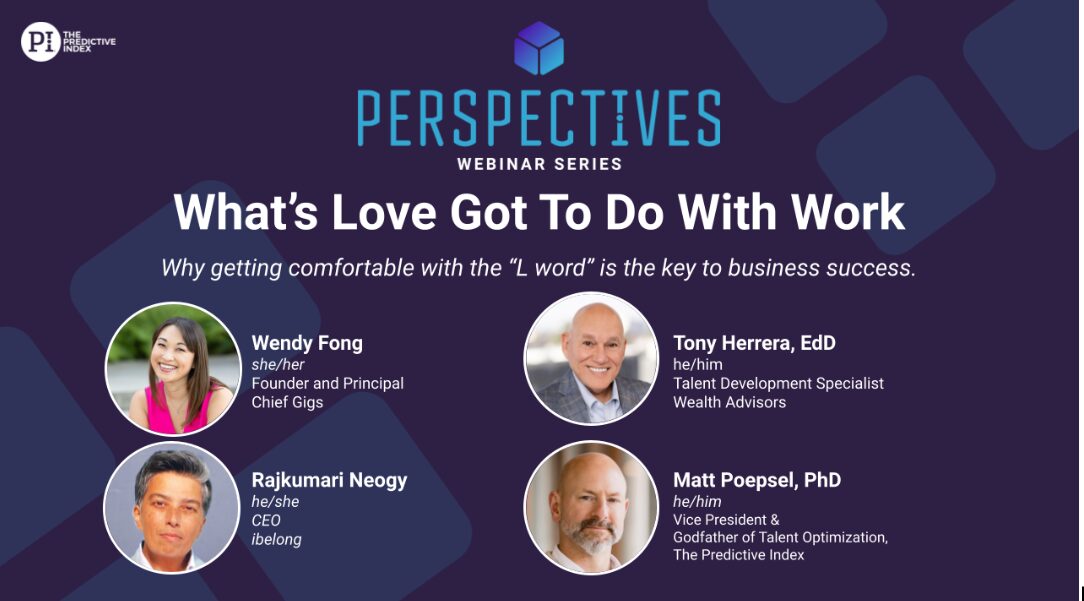In honor of Valentine’s Day, I wanted to provide some tips on how to get everyone’s favorite profession, the data scientist, to fall in love with you. Data scientists are widely regarded as the most attractive profession. In fact, you can easily spot data scientists out in public because they are constantly surrounded by models.
(If you take nothing else from this blog post, please appreciate how amazing that pun was.)
But I digress.
Typically, strategic leaders don’t have time to get into the weeds with their people data. They’re more concerned with the big picture. A data scientist can take these broad questions and translate them into something that can be analyzed. This is a normal and expected part of the workflow.
But if you want to stand out from the crowd—and save yourself time and money—here are some tips on how you can ensure a quick and accurate turnaround of your people analytics questions. As an added bonus, you just might become the favorite person of your friendly neighborhood data scientist (and they might just fall in love with you).

Identify your performance metric.
Not all questions will have an easy performance metric, but most will. The single best thing you can do is identify the exact metric you’re interested in predicting.
It can be a categorical variable (e.g., will a candidate accept an offer or not) or a continuous variable (e.g., ratings from an annual performance review). Either way, it should be specific. It’s likely you’re already tracking key talent metrics for your company; if you have a specific one you want to predict, please specify it.
Consider a pretty typical scenario: an executive comes to their Data Scientist and says they’re interested in predicting employee performance. The data scientist then starts asking probing questions to zero in on what exactly the executive is interested in.
- “What do you mean by performance?”
- “Are you looking at objective metrics like sales volume or ratings from a supervisor/peer/customer?”
- “Are you trying to predict across all departments, or within specific departments?”
As you can imagine, all the back and forth eats up time. And time is money. But if you come into that meeting having already identified the exact people metrics you’re looking to predict (e.g., absenteeism in the last 90 days across all departments), you’ll eliminate a series of conversations and meetings necessary to zero in on the precise things you’re trying to predict.
Identify the data sources to use.
Even the smallest business likely has dozens of sources of data and innumerable variables stored in those sources. It’s a problem that only compounds itself as organizations grow and evolve. The sheer volume of data available for analysis can be overwhelming. Paring the data down for analysis is part of the skillset of the data scientist. But that takes time.
Our default setting is to throw everything into the model. But then we have to connect all the data sources and sift through all the noise that doesn’t matter. You can help by pointing out the sources of data likely to contain variables related to your talent outcome of interest.
For example, suppose you’re trying to predict sales volume for your direct sales team. Undoubtedly, your HRIS will contain a ton of useful data. But the sales team’s notes might reside in a different database, and transcripts of the calls might lie in yet another database. Pointing these out focuses your data scientist on the sources most likely to predict your specified outcome. It also provides a sense of what you expect in terms of scope.
Join 10,000 companies solving the most complex people problems with PI.
Hire the right people, inspire their best work, design dream teams, and sustain engagement for the long haul.
State your hypotheses.
I can’t underestimate how important it is to tell your Data Scientist exactly what your guesses are about the data. You don’t have to be right—just thoughtful. Not only will giving a hypothesis provide a starting point to begin analyzing your people data, but it will ensure you get answers to the questions you have.
Part of what we data scientists love delivering is not just the final numbers or model, but insights from the work we have done. So sharing your hypotheses about your people analytics question provides clues for us on how best to frame the results in the context of what you need. After all, the goal of any people analytics project for a data scientist is to deliver you what you need.
Matthew Borneman is a Data Science Manager at PI.








